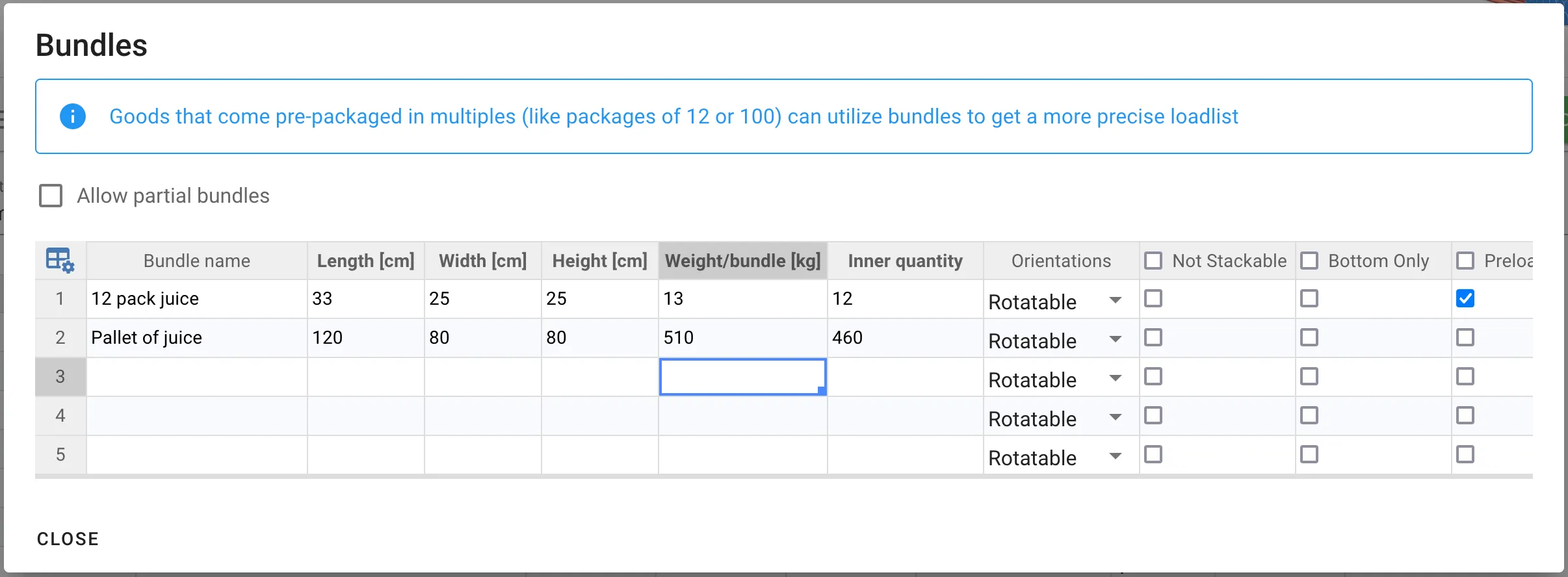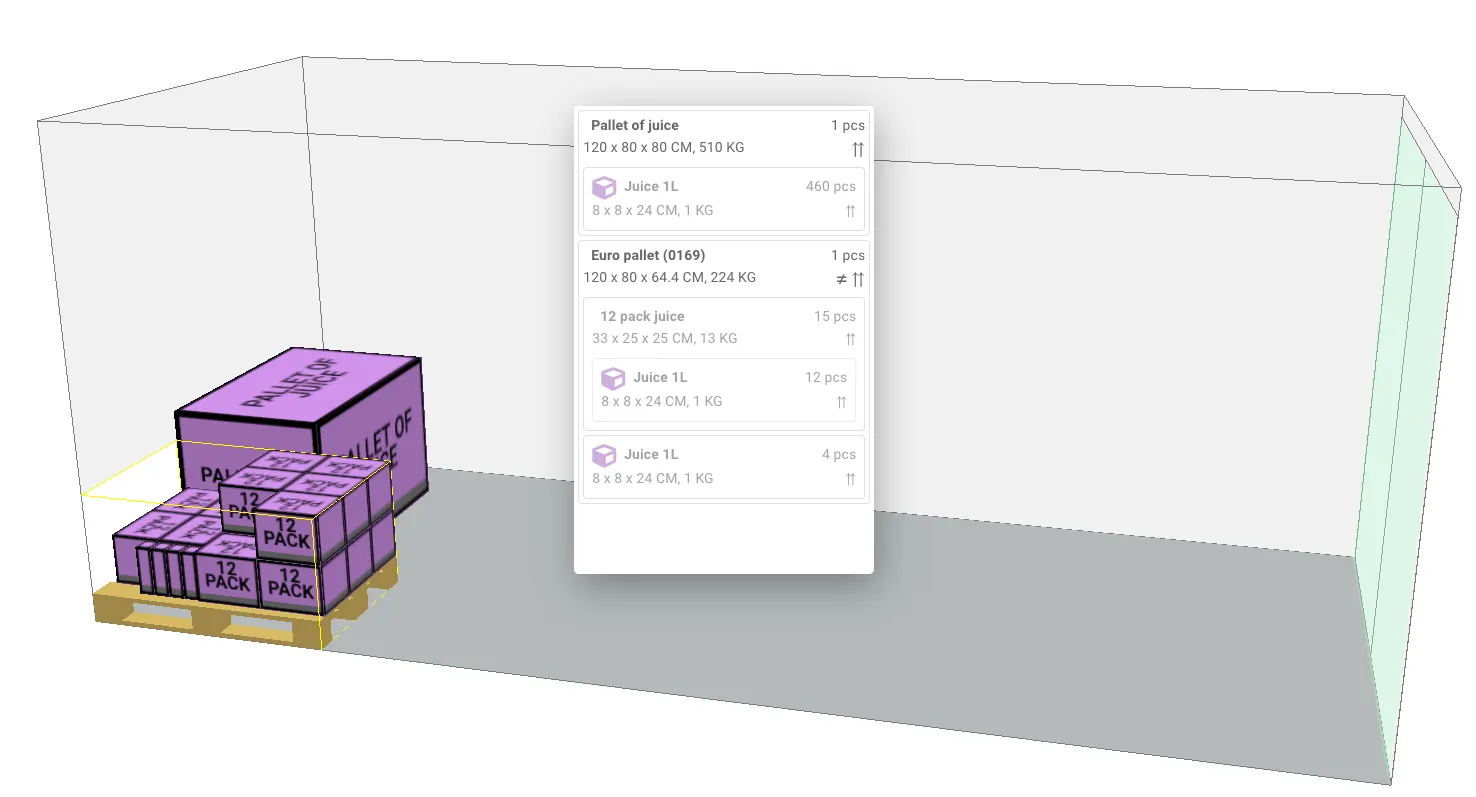Cargo-Planner Docs
Bundling of cargo
Bundling of cargo is useful in a few scenarios. It lets you specify what a master carton looks like, how a pallet should be packed when full, or represent packing of a non-regular interlocking shape.
As an example let’s say we have a cargo called Juice (1 liter), with certain dimensions.

This might be the correct dimensions of a single package of juice, but when we actually send it we both know the dimensions of a flat of 12, and how a fully packed pallet with 460 of these should be packed. This is a little more than the sum of the cargo, since we need some space for the cardboard as well.
To represent this we can double click the empty cell under the Bundles column:

In this example we have specified that the 12-pack should be loaded on pallets, but the full pallet size should not.
The resulting load-list looks something like this:
 We want to pack 644 pieces, which means that the tool will first fill an entire pallet (with 460 pieces). The remaining 184 pieces will be loaded in the 15 pcs of the 12-packs (a total of 180 pcs), the remaining 4 pieces doesn’t divide evenly with a 12-pack, so the remainder is will be loaded piece by piece.
We want to pack 644 pieces, which means that the tool will first fill an entire pallet (with 460 pieces). The remaining 184 pieces will be loaded in the 15 pcs of the 12-packs (a total of 180 pcs), the remaining 4 pieces doesn’t divide evenly with a 12-pack, so the remainder is will be loaded piece by piece.
It will then preload the 12 packs and single pieces on a pallet, before loading them into a 20ft DV container.
Allow partial bundles
The checkbox called Allow partial bundles, allows the system to have bundles that are not completely full. If this is checked the system will always use a bundle, even if we can’t fill it:
 Here the remaining 4 pieces will be loaded in a 12 pack any way which means a total of 16x12 pack (where the last carton only has 4 pieces inside).
Here the remaining 4 pieces will be loaded in a 12 pack any way which means a total of 16x12 pack (where the last carton only has 4 pieces inside).
In this example we created a bundle that is larger than the sum of it’s parts (due to the cardboard mentioned earlier), but if we have a shape that interlocks a certain way, we can also create something that is smaller.